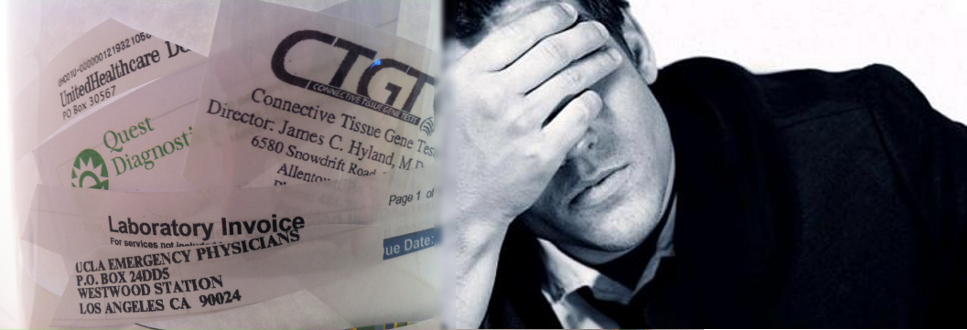Hypophosphatasia
What is hypophosphatasia? The term literally means "hypo" (low), "phosphatase" (phospahatase, the enzyme that splits phosphate from donor molecules in the body and supplies that phosphate to bones), "ia" (in the body). It was coined in 1948 by the Canadian pediatrician, J.C. Rathbun, who described the disorder a male newborn child who died at three weeks of age with soft bones (rickets), respiratory failure and seizures. The child was found to have a low blood level of the enzyme, alkaline phosphatase.
What causes hypophophatasia? Hypophosphatasia is a rare genetic disorder. Its severe form, such as the case of Dr. Rathbun, is estimated to occur in only 1:100,000 live births. The disease is caused by a mutation that disrupts normal function of an enzyme in the skeleton, the tissue non-specific alkaline phospahatase (TNSALP) that is needed for normal mineralization of the skeleton by bone-forming cells.
The genetics of hypophosphatasia. When two copies of a mutated NSALP gene are inherited, one from each parent, then the child will usually suffer from the more severe form of the disease; death rates in the first year of life range up to 50%. When only one mutated gene is inherited from one of the parents, the total amount of non-functional TNSLAP is 50% or less than normal. Because some, but less than the normal amount of alkaline phosphatase, is present in the bone in this form the disease, it is compatible with life beyond the neonatal period, presenting anywhere from early childhood to adulthood. It also appears that some of the mutations in the NSALP gene are not as "bad' as others. For example, it is possible for an adult to development the disease later in life even though that individual has inherited two mutated copies of the gene from his parents. So far, over 200 distinct mutations in the TNSLAP gene have been reported to be associated with hypophosphatasia.
Signs of hypophosphatasia. The signs of hypophophatasia, ranging from most severe to most mild, depend on the three things: 1] whether one or both of the inherited NSALP genes is mutated; 2] how much residual alkaline phosphatase enzyme activity exists in bone as a consequence of the mutations; and 3] the age of onset. The most severe, perinatal form starts in utero and usually causes death shortly after birth; the malformed and under-mineralized rib cage of the child does not expand enough to allow normal lung function. In the infantile form (presents before 6 months of age; i.e. before weight bearing) the "soft bone" state eventually leads to spontaneous fractures and failure in those areas of the skeleton that are most challenged to perform, like the chest wall with breathing. The childhood form of hypophosphatasia usually presents before the age of five years with premature loss of "baby" teeth and growth retardation and skeletal deformity due to under-mineralization of the bones (rickets). The adult-onset form of the disease usually occurs in middle age with spontaneous or low trauma fractures of the weight-bearing parts of the human skeleton, the feet, the legs and the pelvis. It is highly likely that "less severe" mutations in the TNSALP gene will eventually be found in other adult skeletal fragility states now considered under the diagnosis of osteoporosis.
Diagnosis of hypophosphatasia. The diagnosis of depends on detecting a TNSALP mutation in the DNA extracted from cells of the patient suspected, on the clinical grounds noted above, of having the disease; in almost all cases this means a sample of blood containing "white blood cells". A genetic test is now available commercially; the results are usually available within two weeks of submission of the sample.
Treatment of hypophosphatasia. Repeated replacement, targeted specifically to bone, of the human NSALP gene product by intravenous infusion appears to be the only long-lasting, effective treatment for hypophosphatasia in children. Similar clinical trials have begun in adults, but the results are not yet available.
Contributing Medical Specialist
John Adams. M.D.
Professor, Molecular, Cell and Developmental
Biology Medicine, Orthopaedic Surgery UCLA

Specialty
Endocrinology, Diabetes & Metabolism, Internal Medicine,
Orthopedic Surgery




















